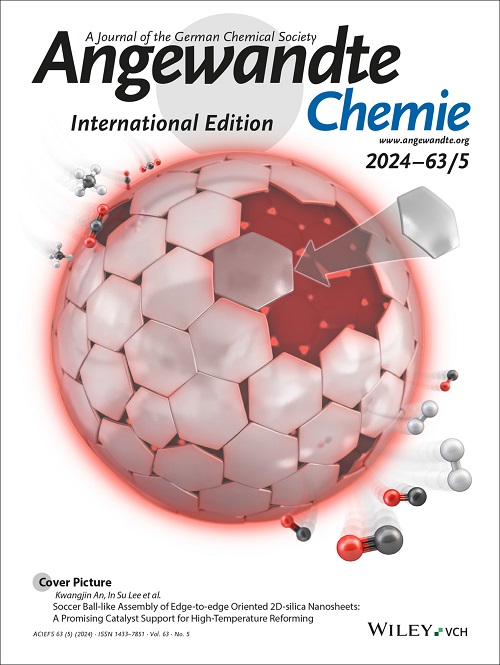Built‐in Electric Field in Freestanding Hydroxide/Sulfide Heterostructures for Industrially Relevant Oxygen Evolution
IF 16.1
1区 化学
Q1 CHEMISTRY, MULTIDISCIPLINARY
引用次数: 0
Abstract
Alkaline water electrolysis (AWE), as a premier technology to massively produce green hydrogen, hinges on outstanding oxygen evolution reaction (OER) electrodes with high activity and robust stability under high current densities. However, it is often challenged by issues such as catalytic layer shedding, ion dissolution, and inefficient bubble desorption. Herein, a scalable corrosion‐electrodeposition method is presented to synthesize nickel‐iron layered double hydroxide (NiFe‐LDH)/Ni3S2 heterostructures on nickel mesh, tailored to meet the stringent requirements of industrial AWE. The study underscores the critical role of the built‐in electric field (BEF) on optimizing electronic properties, curtailing Fe leaching, and enhancing mass transfer. The resultant NiFe‐LDH/Ni3S2 heterostructure manifests remarkable OER performance, with ultra‐low overpotentials of 202 mV at 10 mA cm–2 and 290 mV at 800 mA cm–2 in 1.0 M KOH at 25°C, alongside superior steady‐state stability and resistance to reverse current under fluctuating conditions. Furthermore, the performance is further validated in alkaline electrolyzer, achieving a large current density of 800 mA cm–2 at a cell voltage of 1.908 V, while maintaining excellent stability. This work advances the understanding of BEF‐induced charge redistribution in hetero‐structured catalysts, offering a blueprint for the design of efficient OER electrodes for industrially relevant AWE applications.求助全文
约1分钟内获得全文
求助全文
来源期刊
CiteScore
26.60
自引率
6.60%
发文量
3549
审稿时长
1.5 months
期刊介绍:
Angewandte Chemie, a journal of the German Chemical Society (GDCh), maintains a leading position among scholarly journals in general chemistry with an impressive Impact Factor of 16.6 (2022 Journal Citation Reports, Clarivate, 2023). Published weekly in a reader-friendly format, it features new articles almost every day. Established in 1887, Angewandte Chemie is a prominent chemistry journal, offering a dynamic blend of Review-type articles, Highlights, Communications, and Research Articles on a weekly basis, making it unique in the field.

 求助内容:
求助内容: 应助结果提醒方式:
应助结果提醒方式:


